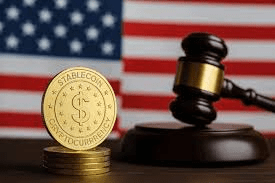#StablecoinLawThe Stablecoin Law is legislation aimed at regulating digital currencies that maintain a stable value, typically by pegging them to traditional assets such as the US dollar or gold. These laws aim to:
✅Protecting consumers and investors: By imposing transparent requirements on issuers of stablecoins, such as disclosing the reserves that back the currency's value and conducting regular audits.
✅Ensuring financial stability: By reducing the risks associated with sudden market fluctuations that may affect stablecoins, and preventing collapses similar to those experienced by some algorithmic stablecoins in the past.
✅Combating money laundering and terrorism financing: By applying strict anti-money laundering (AML) laws and know your customer (KYC) regulations on issuers of stablecoins.
✅Enhancing trust and innovation: By establishing a clear legal framework within which businesses and financial institutions can operate, encouraging the adoption of stablecoins in payment systems and contributing to the growth of the digital finance sector.
For example, in the United States, the "GENIUS" Act (Guiding and Establishing National Innovation for American Stablecoins) was recently signed into law, imposing strict requirements to back stablecoins with cash reserves, conducting monthly financial audits, and complying with anti-money laundering laws.
In the European Union, the "Markets in Crypto-Assets" (MiCA) law is a comprehensive regulatory framework that covers stablecoins and aims to provide a unified regulatory environment across member states, prohibiting the issuance of algorithmic stablecoins that are not backed by assets.
Overall, these laws seek to integrate stablecoins into the traditional financial system in a safe and organized manner, while maintaining their advantages such as transaction speed and low cost😌😌.
